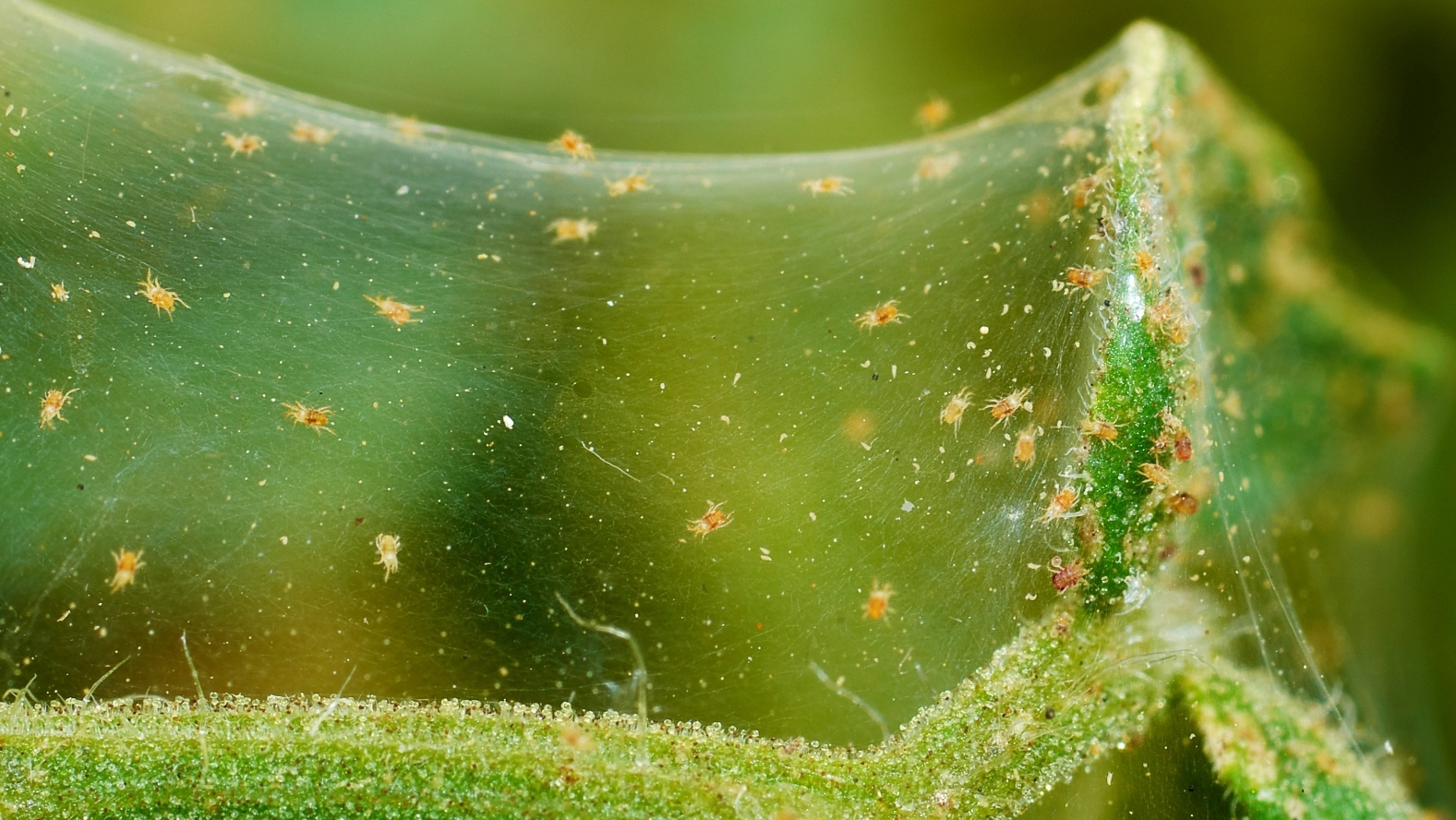If you have a spider mite infestation, it can be controlled. For home gardeners and market growers, several remedies are available.
Prevention
Of course, prevention is better than fighting the eight-legged hordes later in the summer. Like any pest, their numbers will rapidly multiply when conditions are ideal.
- Drought-stressed plants are more likely to attract spider mites. Keeping your garden well watered and your soil fertile will go a long way toward helping to keep your plants strong and able to shrug off a few mites.
- Right plant, right place is the central pillar of Integrated Pest Management. If you have known dry areas of your property, use drought-tolerant plants for those hot, dry locations where mites might otherwise be a problem.
- Keep houseplants well-watered and fertilized. Consider using a humidifier to keep your home from becoming too dry—most houseplants like some humidity.
Treatment for Spider Mites
If you have detected spider mites that are still active and running about, it’s time to take action. A few options are available and depend partly on whether your problem is indoors or outdoors.
Spider Mites on Indoor Plants
If your houseplant is severely damaged, it may be best to remove it and quarantine it before trying the actions below.
Wash ‘em Off
Spider mites on houseplants can often be washed way. If your plant is of manageable size, take it to your sink or bathtub and use the sprayer attachment to give the underside of the plant a good washing. Don’t be timid. Spray them right off. You can gently rub the leaves while spraying to help knock them loose.
Soaps and Oils
Insecticidal soaps work well on houseplants. They are usually available at your local home and garden center and are inexpensive.
Apply them thoroughly to the entire plant, following the label directions, but take special care to wet the undersides of the leaves well. Three to four applications a day or two apart may be needed to finally get the mites under control.
Check out this excellent page on Less Toxic Insecticides from Clemson Cooperative Extension if you want to dive deeper into these products and their benefits.
Neem oil can also be used. While the insecticidal soap attacks the soft shell of the adult mites and dehydrates them, Neem oil suffocates them and interferes with their egg production. No more eggs means no more mites. Like before, make sure to coat the undersides of all the leaves. Don’t leave them any refuge!
Spider Mites on Outdoor Plants
Get the Hose
Spider mites in the garden can often be treated with your hose nozzle. A vigorous spray will knock many of them off, but you must spray the undersides of the leaves. Don’t be so zealous with the hose pressure that you break your plants.
Soaps and Oils
Insecticidal soaps work well in the garden too. Save your hands from constant squeezing of the spray bottle and save some time by mixing the soap in a pump-type spray bottle. Quarter gallon or half gallon handheld models are available, or larger 1-2 gallon types can be used if treatment area is larger.
These pump sprayers provide a better application rate and will be more effective. Both Neem oil solutions and insecticidal soaps may be applied in this way. Three to four applications will likely be necessary. These chemicals must contact the mite to kill it. Avoid spraying on water-stressed plants, as it can affect weak plants, too.
Use Good Bugs
Biological controls are also available for use in the garden and can provide longer-term control with less work. They are harder to find, and you will likely have to order them from a greenhouse or online. Search for “predatory mites,” and you’ll likely get the right ones.
Phytoseiulus persimilis is the most common predatory mite used. Neoseiulus fallacis is also used for lower densities but longer protection times. Predatory mites will attack all stages of the spider mites but may migrate away once their food is gone or eat each other.
More information on predatory control of mites can be found in the Mites Management Guidelines published by the University of California’s Integrated Pest Management program.












